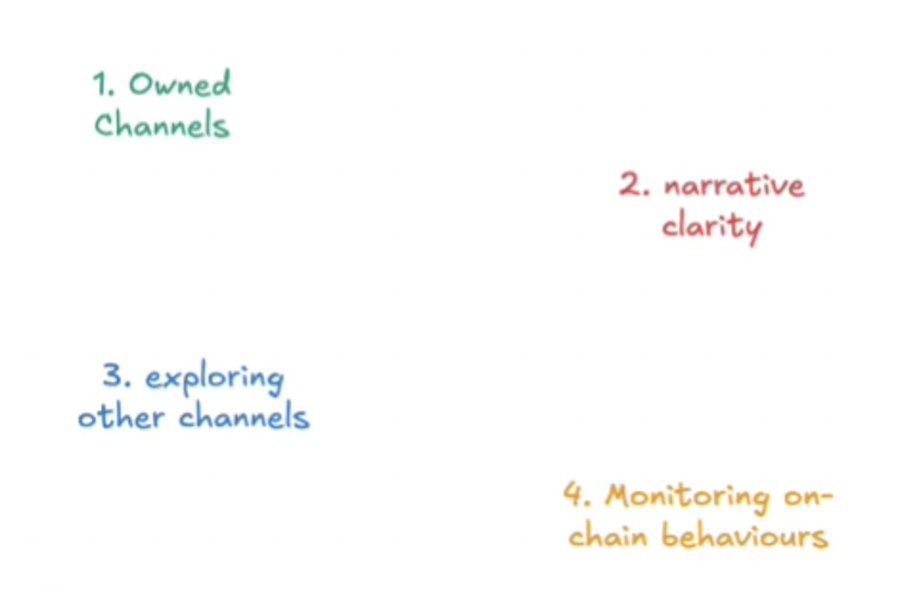Is Crypto Twitter Still Worth It for Web3 Projects in 2025?

X (formerly Twitter) has been the loudest room in crypto for over a decade. It’s where narratives are born, memes go viral, and founders hustle for attention. But in 2025, a growing number of projects are asking the question out loud:
Is Crypto Twitter even worth it anymore?
Not because the platform is irrelevant, but because most teams are using it wrong.
In this post, we’ll break down what CT still does well, where it consistently falls short, and how to build a smarter, more sustainable strategy that doesn’t rely on shouting into the void.
Why Twitter became Web3’s town square
Crypto and Twitter didn’t just happen to grow up together. The platform (now X) was custom-built for the speed, chaos, and culture of this industry.
Here’s why it worked:
- Cultural fit: Crypto moves fast. And Twitter’s real-time feed was the perfect match for market volatility, rapid idea exchange, and meme warfare. It didn’t just reflect crypto culture, it helped shape it.
- Virality potential: Because everything happens in public, good content spreads fast. A single meme, thread, or hot take can break through noise, spark attention, and generate thousands of impressions with zero budget. For lean teams, that kind of leverage is rare.
- Cross-pollination: CT didn’t grow in a vacuum. Other influential sectors (such as tech, finance, journalism, even philosophy) were already active on the platform. That overlap created an environment where crypto narratives could break outside the bubble and reach new audiences. It made it easier to engage with adjacent communities, spark curiosity, and pull in users who weren’t yet “crypto-native” but were crypto-curious.
- Asymmetric networking: CT made it normal to pitch a fund in the replies or have a protocol founder retweet your experiment. No warm intros needed. That level of access made it a breeding ground for talent, collaboration, and discovery.
Back then, CT wasn’t just distribution. It was discovery. A proving ground for products, ideas, and people.
But the landscape changed
CT doesn’t feel the same anymore, and that’s not nostalgia talking. The system changed.
As capital flooded the space, the game shifted from insight to influence. From conversation to clout.

- Exchanges and launchpads started using follower count and impressions as a proxy for legitimacy.
- InfoFi-style monetization models started rewarding reach over quality.
- Permissionless KOL networks began pumping AI-written, low-effort content.
- Founders learned that engagement farming often gets rewarded more than shipping.
And so CT became noisy. Not in a healthy “many ideas” way, but in a broken-incentive, low-signal way.
The worst part? Teams started mistaking attention for traction.
Is Crypto Twitter a negative EV channel?
It can be, depending on how you use it.
The current incentives push teams to over-index on vanity metrics. CT impressions and engagement become goals, not tools. Especially when launchpads, advisors, and KOLs all use them as signals of readiness.
But high engagement doesn’t mean high intent. It doesn’t mean people will use your product. And it definitely doesn’t mean they’ll stick around post-launch.
Projects that ride CT hype into TGE often get a brutal wake-up call. The token pumps, then dumps. Because there was never real demand, just empty reach.
What Crypto Twitter is still good for
Even though CT is currently full of low-effort meme content and noisy engagement farming, we shouldn’t dismiss the platform entirely. There’s still value to be found, if used intentionally.
Think of it as a sensing layer, not a growth engine, and use it for:
Narrative testing
Twitter is one of the best platforms to test how different ideas, hooks, and value props resonate. You can put out different versions of your positioning or messaging and see what gets traction. The feedback is immediate, and it helps shape how you talk about your product.
Cultural relevance
Crypto culture still lives on Twitter. From memes to market sentiment to the rise of new narratives, Twitter gives you a real-time pulse on the community. Staying active helps you remain relevant to the conversations that matter, and to the builders and users driving them.
Finding early believers
Because of its viral nature, Twitter is one of the few places where you can still reach new audiences organically, especially early adopters who want to be the first to spot promising projects. A single thread or clip can spark interest and bring in users who turn into long-term contributors.
Speed of reach
No other platform lets you share something and have thousands of people interact with it in minutes. That immediacy is a double-edged sword, but when used well, it’s incredibly powerful.
Use it for what it’s good at. Don’t expect it to do jobs it’s not designed for.
Where Crypto Twitter falls short
While Crypto Twitter can help you test resonance and build surface-level awareness, it struggles to drive sustainable growth for most crypto products. Here’s why:
1. It doesn’t signal product-market fit
Going viral doesn’t mean your product solves a real problem. Plenty of projects have built hype on the timeline, only to fizzle once users actually try the product. Twitter is good for exposure, but not for validating real utility.
2. It’s not a reliable acquisition engine
Follower count doesn’t equal traction. Many teams with massive followings still struggle with low user retention. Twitter might help you spark interest, but you need other channels, like SEO, content, communities, or onboarding flows, to convert and retain users.
3. It offers low defensibility
There’s no moat to Crypto Twitter. Trends shift quickly. Algorithms change. If you’re only known on Twitter, you’re at the mercy of the timeline. The most durable brands are those that can pull people in across multiple touchpoints and build true affinity.
4. It rewards spectacle over substance
The timeline is optimized for virality, not value. Projects that post clickbait threads and engage with drama often get more reach than those shipping quietly in the background. That dynamic can distort priorities.

So what should founders do instead?
X is one channel. But it can’t be the entire strategy. You need a broader system that turns attention into actual traction.
1. Build owned and intent-based channels
You don’t control the algo, but you do control your owned assets.
- Website
- In-product experiences
- Discord or Telegram
- TikTok
These are where conversion and education happen. They compound. They create depth.
If X is the spark, your owned and intent-based channels are the fire,
2. Tighten your narrative
CT is a great lab for testing ideas. But don’t let the feedback loop define your brand.
Use those quick reactions to sharpen a deeper, more durable story. One that lives in your product, your pitch, and your landing pages and not just your timeline.
Start with:
- What pain are we solving?
- Why now?
- Who exactly is this for?
CT will never tell your whole story. But it can help you test the intro.
3. Explore other platforms
Your audience might be somewhere else.
If you’re building something consumer-focused, TikTok might outperform X. If you’re speaking to technical decision-makers, YouTube or podcast interviews might go further.
Don’t assume CT is the default. Match the platform to the people you’re trying to serve.
4. Track on-chain behavior
On-chain data doesn’t lie. Marketing needs to move beyond surface-level metrics and focus on action.
Track what users are doing. Where they’re dropping off. What brings them back.
Let CT inform your strategy, not define it.
Crypto Twitter is still powerful, but incomplete
Crypto Twitter is noisy, bot-ridden, and often misleading. But it’s also where Web3 culture lives. The key is using it strategically, not relying on it blindly.
The most successful Web3 projects in 2025 aren’t the loudest on the timeline. They’re the ones building thoughtful, multi-channel strategies, using Twitter as one of many tools.
If you're trying to figure out what role Twitter should play in your growth plan, you're not alone.
Want help building a marketing strategy that goes beyond the timeline? DM us to book a strategy call.

